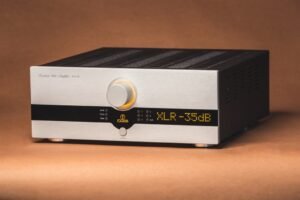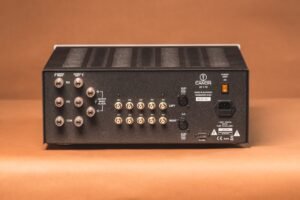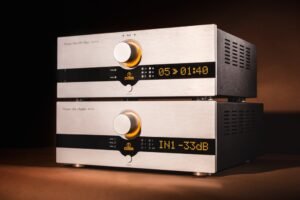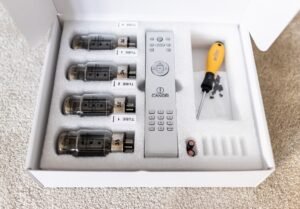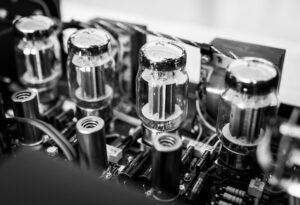- Home
- About us
- Blog
- Shop
- Brands
- ALL Brands List
- Acoustical Systems
- Analog Relax
- Antipodes Audio
- Astell & Kern
- Audio Solutions
- AudioByte
- AudioCircle
- Audiomica Laboratory
- Canary Audio
- Canor Audio
- Chameleon Audio
- Clarisys Audio
- CSPort
- Dan D'agostino
- Eversolo
- Ferrum Audio
- Fezz Audio
- Fonolab
- Glanz
- HiFiMAN
- HoloAudio
- LAB 12
- LAIV
- LampizatOr
- Magico
- Mega Acoustic
- Monrio Audio
- Origin Live
- Pachancko Labs
- Phasemation
- Pink Faun
- PLiXIR
- Qualiton
- Reed
- Remton
- Revival Audio
- Riviera Audio
- Rockna Audio
- Sbooster
- Shelter
- Sigma Acoustics
- Signal Projects
- SOtM Audio
- SPEC
- Takatsuki
- Takumi
- Tedeska
- Tellurium Q
- Trafomatic Audio
- Tsakiridis Devices
- Volumio
- Sales
- Second Hand Deals
- Account
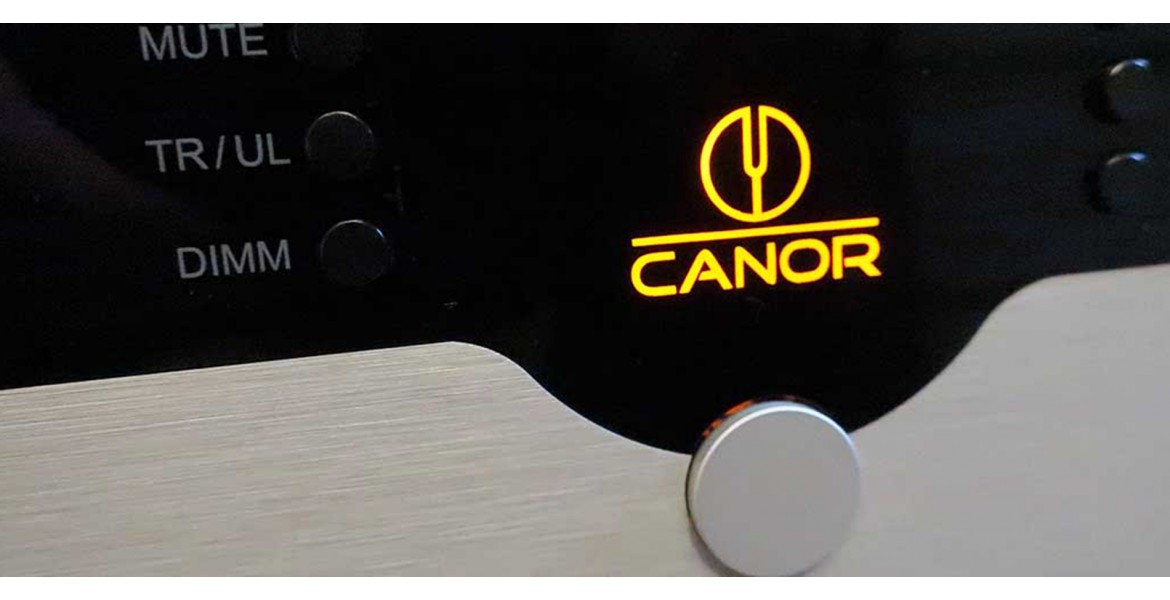
Canor AI 1.10 Review by Hiend News
The Return of the Aces !
KT88 Based Tube Integrated Amplifier
Description Now as then, Canor’s top integrated models are about 435 x 170 x 485 mm deep, tall & wide.
A luxurius aluminium faceplate features the really huge (and never-seen before in home audio gear) display screen. Immediately behind its aluminum front plate—available in silver or black, the latter to match the rest of the case— enclosed are 1x 12AX7 , 2x 12AT7 preamp section tubes and 4x KT88 Electroharmonix output tubes [you can also use any 6550-KT90 or KT120 on the market].
This is an integrated tube amplifier with entirely new topology compared to previous 6550 model. As the brand designers told us (interview link also here: Canor Audio Interview [English] ) the aim of the development was to merge the best sound characteristics of previous models all together.
The amplifier operates in pure class-A with autobias function (great news when you reinstall output tubes, no adjustments needed!) and features also on-the-fly switching between triode mode (20 Watts) or ultalinear mode (40 Watts).
The input sensitivity is 500 mV and on the rear panel are five RCAs and one XLR input for various sources. Also, a C-Link to control ‘master and slave’ so to operate as monoblock (with the one of the two integrateds working as the preamplification of both monos) plus extra speakers binding post for the output as a ‘bridged mono’ delivering twice the wattage except the loudspeakers posts of 4 and 8 ohms.
Not forget to mention the mains on/off switch, the perfect packaging, instruction manual, excellent tubes package (very important) plus a very nice ‘starters’ audiophile power cable from IsoTek included. And…one of the sexiest remote controls out there – forget plastic cheap ones!
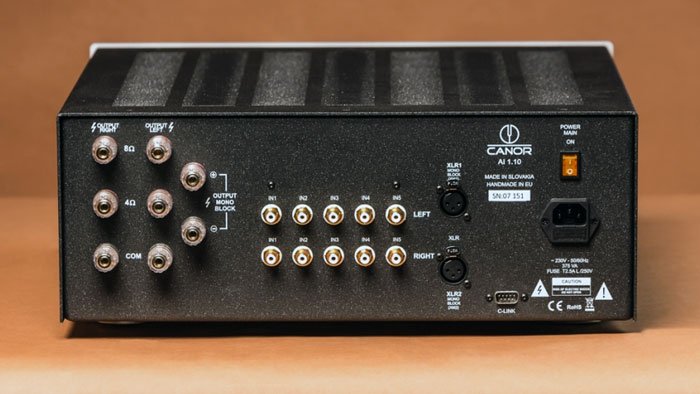
Setup The AI 1.10 arrived on a huge shipping pallet in a very large cardboard box, alongside with a quad of extra Electroharmonix KT88EH tubes and (as mentioned previously) an extra Isotek AC-Power cable, just for the reviewing purposes. Instead, I immediately plugged in the amplifier with an Oyaide Tunami power cord through the Shunyata Hydra AC filter/conditioning and installed a set of slightly used KT88EH.
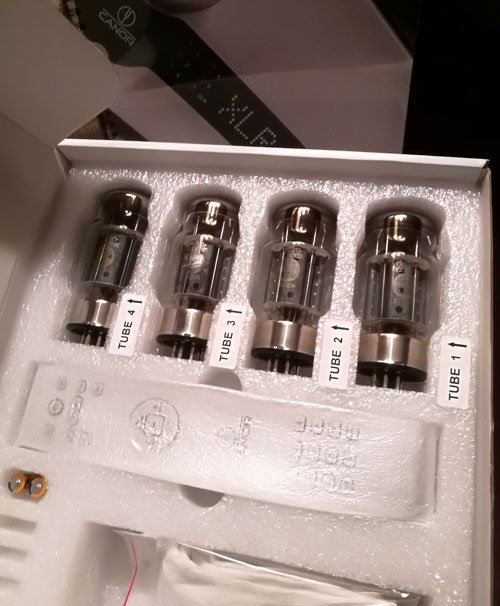
The rest of the setup was Cardas upper-tier speaker cables, silver custom hand-made RCA interconnects and also a set of speaker cables & interconnects by TelluriumQ.
As a digital source I used the Hοlo Audio Kitsune edition Level 3, SOtM and Cambridge Audio Azur (model 2016) converters. Let the amplifier burn-in no more than sixty hours, three hours per day or so. It was semi burned-in as I was informed by the Greek distributor as it should need more than 100 hours for proper performance, as usual.
I like the idea to first audition all the review sample amps with ProAc Studio & Response speakers that I know very well, then move them to our other room where I have placed my Klipschhorn speakers which are pretty sensitive and tube friendly, along with other horn and full range speakers.
For this specific review I also auditioned Canor with AudioSolutions gorgeous Virtuoso M and finally with a fantastic 10-k priced two-way floorstanding speaker by the Italian Σ-Acoustics M8.
With the top panel removed, installing output tubes was a snap: each tube is labeled with its corresponding socket number on the circuit board. Tubes installed, with absolutely no biasing needed because the circuit is auto-bias! Hey-ho, lets go – no “Blitzkrieg”, only music !
Let the music play Finally, a higher end audio remote !
The bigger than ever informative display screen of this all Slovakia-made audiophile amplifier is rather good. Any changes in volume or modes is totally visible with such a large display. I enjoyed this.
The AI 1.10 seemed to have an uncanny ability to add just the right amount of fluidity to instruments or voices with the appropriate power cable like TelluriumQ, Kubala-Sosna or Oyaide.
Every music program sounded more organic, with a great sense of real-life flow. The sound of guitar was another ear-opener: tight, ‘wet’ and bold enough to enjoy.
A wide range of guitar genres from S.R.V. blues or Pat Metheny Jazz masterclass to heavy or epic metal burn-in & drinks ‘torture’ (!), everything sounded punchy, utterly real and tall enough.
There was no hint of loss of depth or push-pull tubes sense of bloat.
The transients were speedy and visceral matching the sound of a good pair of seperates and not an all-in-one box like this. It’s probably the art of ear tuning, obviously the matching of the rest of my reviewing gear and the fact that designers prefered this time, with this new model, to deal with the more resolute KT88EH output quad and leave back for another ‘amp’s soul kitchen’ the 6550s or EL34s.
This prompted me to poke the bear a bit at the 20-watt lower-output Class-A setting for critical listening. It maintained its refined, nuanced composure without stress at mid to slightly higher db levels – something that is irresistible and the preferred mode, with the exception when pop, r&b or dance music comes in and then Ultralinear operation was not a one way path.
The AI 1.10’s holographic presentation on the legendary performance & composition of guitar instrumental ‘Lenny’ by Stevie Ray Vaughan found on ‘Texas Flood’ album, especially in Triode mode (20W/channel) and strangely driving flawlessly both two totally different speaker philosophies [ProAc & Klipschorns] was simply breathtaking.
With both speakers, considering of course the downsides of each ‘school’ (horns vs bass reflex ‘boxy’ two-ways), the tonality and the right amount of bite plus the rightness and liquidity of Fender’s sound was there. An exceptionally open reproduction of recording’s space, more colorful and weighty than in ultralinear mode and delicately sweet.
The treble had some of the best balance of liquidity, sweetness and resolution I’ve ever heard on a tube integrated of the sub-10k category, giving priority on harmonic rightness. Especially with instruments like guitars (acoustics & electrics), hi-hats or bells, the important harmonic cohesiveness was there, in all its glory. Switching to Ultralinear mode, the performance gained speed and even more treble extension but lost a bit of the woody beloved feel, but this might be closer and truthful to the in-studio signature sonics of the tubed multi-amps & multi-cabinets that Stevie Ray used in his recordings. It was also really difficult for me to blame any bass inconsistency or bloat in Triode mode on both speakers.
Despite the modest sensitivity of 8Ω and 86-87db/w/m of my ProAc speakers, the twenty available watts in class-A Triode operation nailed this track, with all the micro & macro dynamic authority needed to enjoy mid or lower late-night decibel levels.
Continuing the critical listening in Triode mode, with the KT88 Electroharmonix quad installed I was absolutely sure that this selection of output tubes was the ideal for Canor’s circuit musical soul.
The resolution, extension and transient responsiveness was more than satisfying, delivering hand-in-hand with the rest of the AI 1.10 quality components the proper weight, heighand in general soundstage’s great dimensionality needed in rock music. Critical listening was done with many rock productions from the likes of AC/DC, Doors, Van Halen, but I especially focused on the last track of Billy Idol’s ‘Whiplash Smile’ album ‘One Night, One Chance”. I believe I have the right to boldly say: besides the well-known inherent limitations of recorded sound and the personality of current review speakers, the reference tube amplifier filled the room with real-life flow magic, creamy aura and touch.
Those artifacts of audio reproduction were more ‘there’ with the Canor than with many other mid-sized integrated amps (even with some more expensive pre-power seperates) I have used. With its open soundstage, tonal beauty and not an overdose of saturation, the supremely musical performance connected me with my music better than the majority of every other KT-based integrated I’ve heard up to 7K euros. Canor’s AI 1.10 adds one more great component and completed my long lasting list of the (now) seven all-mighty mid to low priced high-end integrated amps offers including Jadis, Conrad-Johnson, Mastersound, E.A.R. Yoshino, Pathos Acoustics and Audio Hungary tubed all-in-one marvels up to this price point.
Sonata for Cello and Piano, no 2. allegro ma non tropo performed by Rostropovich & composed by B. Britten.
In portraying piano solo or for instance a ‘conversation’ between cello and piano on this historical recording, the AI 1.10 proved the ability to deliver top-tier delicacy but also drawing the listener into the music venue. I auditioned both Triode and Ultralinear modes.
Triode mode delivered better tonal depth and color, without sacrificing authority or compress up to ‘annoying’ levels macrodynamics when driving medium to low sensitivity speakers.
This is a rare gift at this price point. Switching back and forth and on-the-fly in Ultralinear mode, the whole spectrum gained speed, expanded dynamic swings and agility but at the cost of this extra beloved tonal richness and rightness that we all search in tubes world.
Now married internally to a Class A tube preamplification stage, the need for a great preamplification and extra set interconnects plus power cables is needless with Canor. It’s a no-compromise, two boxes in one amp with excellent construction and circuit design concept.
Note that I strongly suggest to purchase Oyaide Tunami or TelluriumQ Black power cable, as they both mate absolutely well offering the right dose of liquidity, luminance and flow and therefore reaching new heights of ‘magic appeal’.
I’m addicted to various performances and interpretations of Paganini’s Concertos (and Caprices, of course).
The Italian magic of these compositions is begging for the best in audio equipment for their reproduction and especially tubes. Expensive tube amplification, marvelous speakers and the best cable matching, in particular. In order to understand better the level of performance our review sample the Canor AI 1.10 could reach, I connected it to the AudioSolutions Virtuoso (~22k euros) and then to Σ-Acoustics beautiful Italian speakers (~10k euros).
So, Paganini’s Concerto No.1 & No.2 (The Netherlands Symphony Orchestra 2009 / Jan Willem de Vriend – Rudolf Koelman) is flawlessly recorded on this SACD and gave me a lit picture of the concert hall.
I expected to hear more frequency extension and softening in the bass region than my Jadis Orchestra Reference overachiever (costing a mere… 4k nowadays with KT120 tubes) but the Canor sounded just a bit smoother and slightly more open and transparent in higher extremes.
Not to mention, I drowned into music like I was sitting in F or G row and auditioned almost an hour of Paganini.
Compared to Audio Hungary’s Qualiton A20i 20 watt (5881 tubes), Class-A operating little gem I reviewed a year and a half or so ago, the AI 1.10 sounds even more tubey and bold by all means -in Triode Class-A mode-, at the expense of the extra illumination and even more ambient retrieval at mid & higher freq. spectrum, where the Hungarian one seemed more talented and reminded me a bit of the OTL territory of amplification.
Inside Canor Audio AI 1.10. Quality Matters.
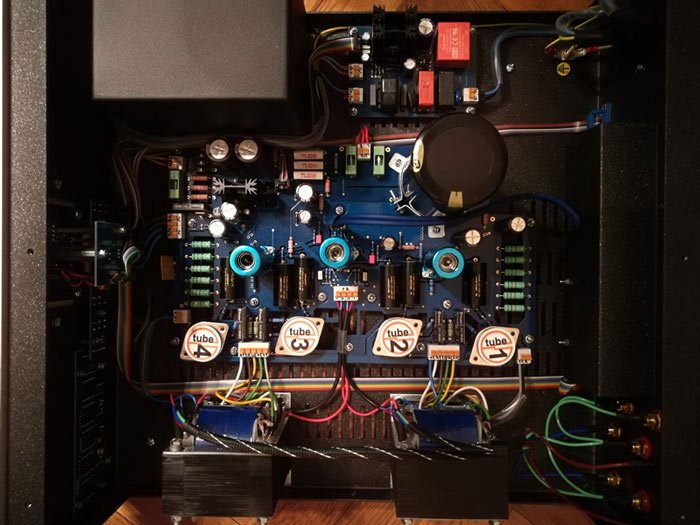
Conclusion Canor AI 1.10 operated flawlessly. The retubing bias procedure is automated (autobias), so you can install KT88/KT90 or KT120 in a snap.
It looks great on the rack. All the basics are more than covered.
But the most important: By every measure, on its own or as compared to integrated amps costing much more, the AI 1.10 is a superbly musical tube amplifier.
As I had hoped, Canor Audio’s newest AI 1.10 brought to all my speakers a rightness of tonal color, excellent frequency response plus all the drama I needed to enjoy classical music and rock.
And all of the above at a very, very appealing price! It also ‘does detail & macrodynamics very well by any Class A solid state integrated standard’. In both operation modes it remains smooth and forceful, but I fell in love with the completeness in Triode mode that nicely fleshed out the midrange with minimal loss on lower frequencies or attack. It gets my vote for one of the few best of the best offers.
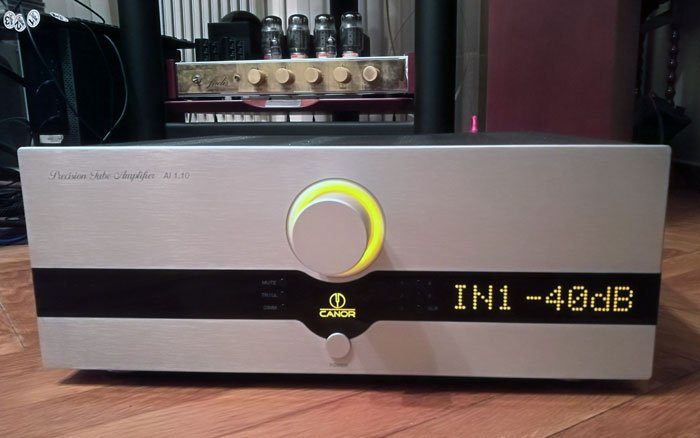
Review System: Speakers from: ProAc (previous line models from Studio & Repsonse lines), Klipsch ‘Klipschorn’, AudioSolutions Virtuoso and Σ-Acoustics,
Digital Sources from: Cambridge Audio, Holo Audio Kitsune Level 3, SOtM,
Analog Souces: Origin Live, Canary Audio phono stage, Phasemation cartridges,
Cables: (previous line) Cardas Golden Presence, TelluriumQ Blue & Black Ultra & various silver custom-made interconnects.
AC Cables from Tellurium Q black power , IsoTek, Kubala-Sosnsa and Oyaide Tunami (with the gold plated plugs).
AC filtering: Plixir BAC1500 ,Shunyata Research Hydra ,
Specs & Price:
Output power2 x 40 W /4,8Ohm – ultralinear 2 x 20W /4,8 Ohm -triode
Inputs sensitivity500 mV
Frequency range10 – 50 000 Hz ±0,5dB / 5 W
Inputs impedance30 kOhm
Inputs5
Harmonic distortion <0,05 % /1 kHz, 5 W
Signal-to-noise ratio> 95 dB
Tube complement1x 12AX7 , 2x 12AT7, 4x KT88
Power230 V / 50 Hz / 375VA
Dimensions (w x h x d)435 x 170 x 485 mm
Weight 26 kg
